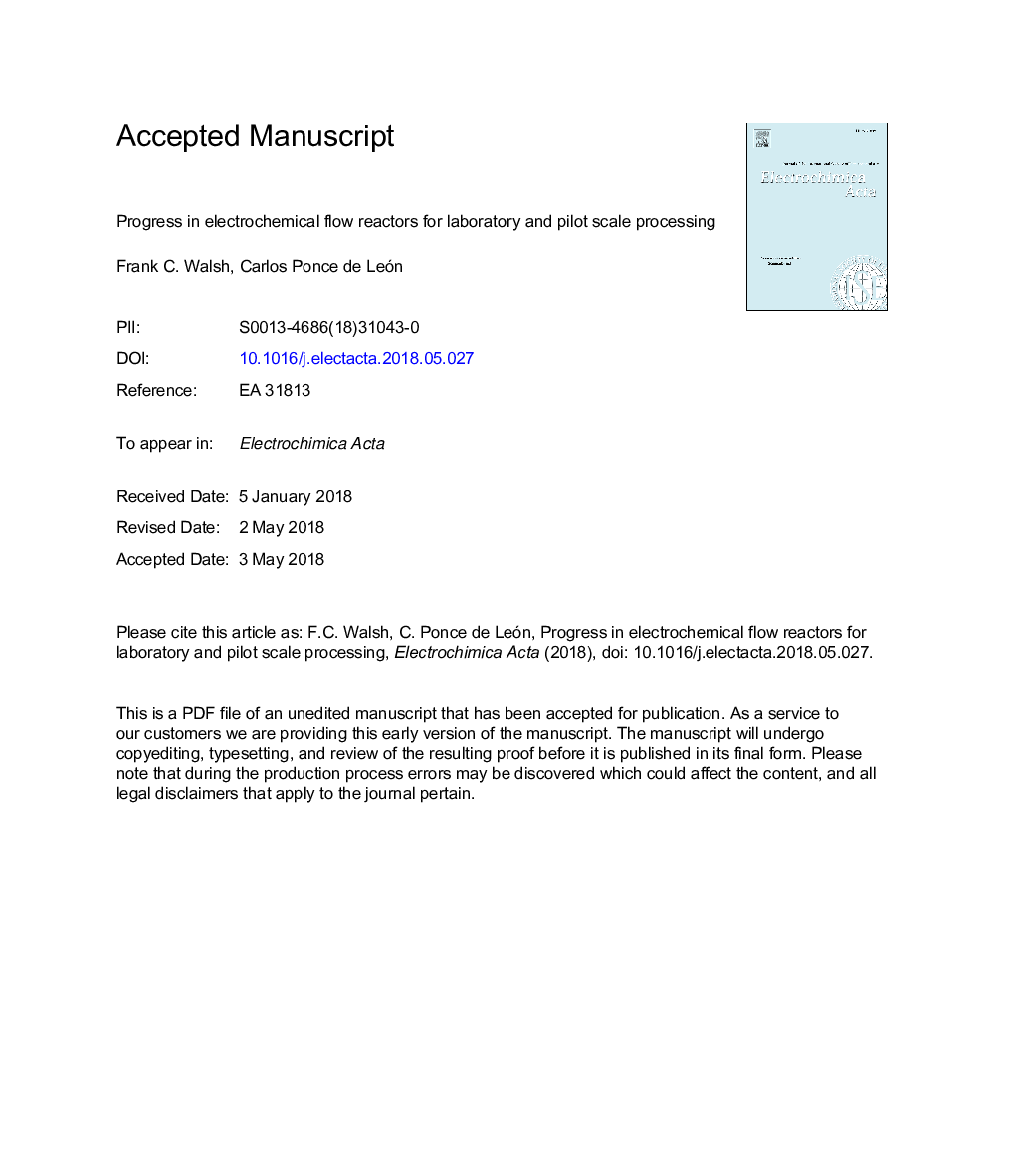| Article ID | Journal | Published Year | Pages | File Type |
|---|---|---|---|---|
| 6602524 | Electrochimica Acta | 2018 | 109 Pages |
Abstract
The principles governing the selection of an appropriate type of electrochemical flow reactor for use at laboratory or pilot scale are reviewed. Good practice in electrochemistry and electrochemical engineering must be incorporated, together with practical aspects, such as the form of reactants and products, the required performance, ease of assembly, the maintenance schedule and scale-up plans. Diverse electrode forms and reactor designs are illustrated by examples from the authors' laboratories. The versatile parallel plate geometry, often in modular, filter-press format, occupies a prominent position, both in the laboratory and in industry. The simple parallel plate geometry is readily enhanced by inclusion of porous, 3-dimensional electrodes, structured electrode surfaces and bipolar electrical connections, with necessary consideration of the reaction environment, especially potential- and current-distributions, uniformity of flow and mass transport rates, electrode activity, side reactions and current leakage. More specialised electrode geometries, such as concentric reactors, rotating cylinder electrodes, porous electrodes, packed beds, fluidised beds and bipolar trickle towers, are sometimes chosen. Applications span materials recycling, environmental treatment and electrosynthesis. A decision tree to aid the choice of reactor design features is provided. Recent trends, such as fast prototyping of reactors via 3-D printing of flow channels, miniaturisation and use of multi-physics modelling, are highlighted. Future research and development needs are suggested.
Keywords
Reaction environmentRFBRCHFBESCEPEMRVCABSPTFEHDPERCEacrylonitrile butadiene styreneGas diffusion electrodethree-dimensional electroderotating cylinder electrodePorous electrodestandard hydrogen electrodeSaturated Calomel ElectrodeSHEredox flow batteryGDEReactorProton exchange membraneElectrochemical engineeringElectrode material3D printingPoly(tetrafluoroethylene)High density polyethylenePVCReticulated vitreous carbonActivated carbonPoly(vinylchloride)Graphite felt
Related Topics
Physical Sciences and Engineering
Chemical Engineering
Chemical Engineering (General)
Authors
Frank C. Walsh, Carlos Ponce de León,
